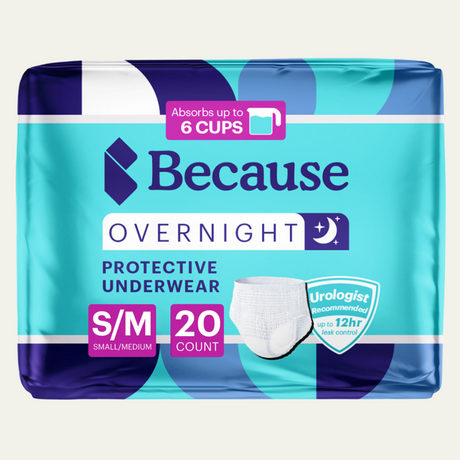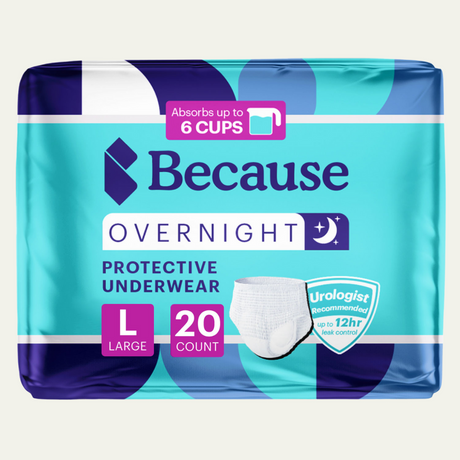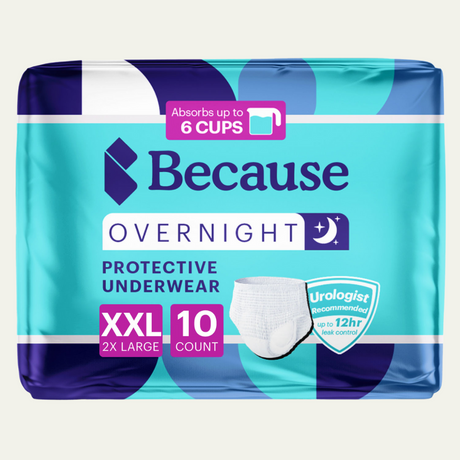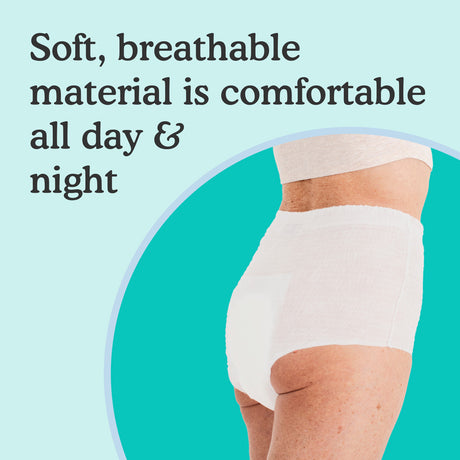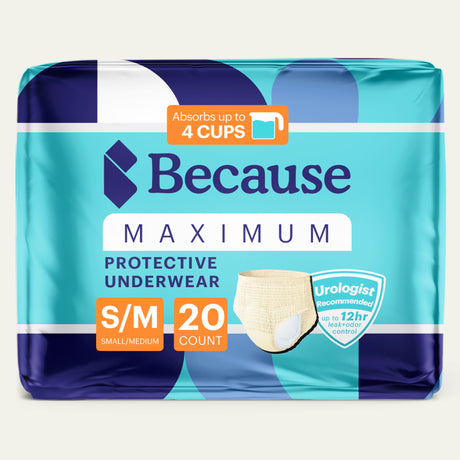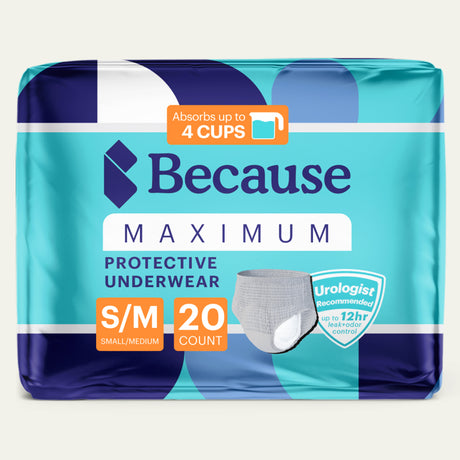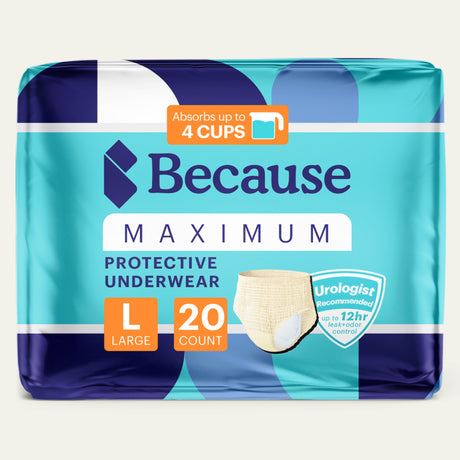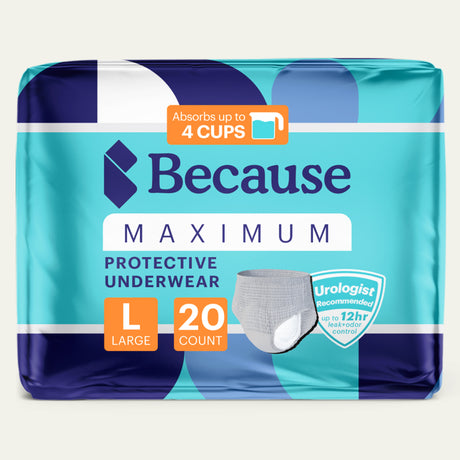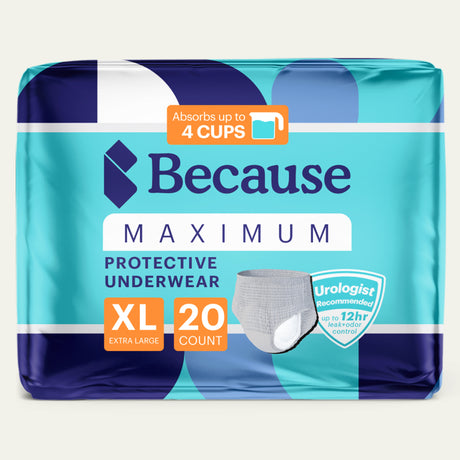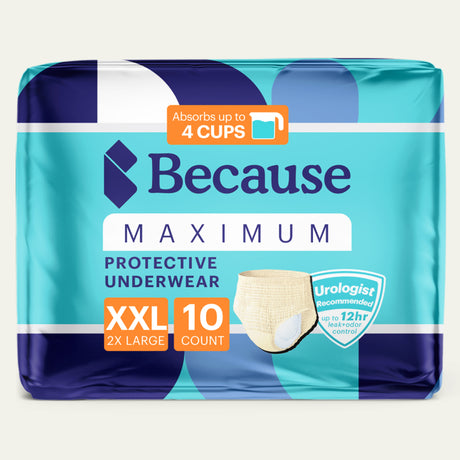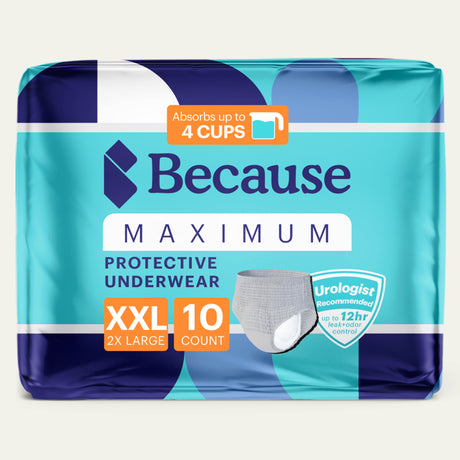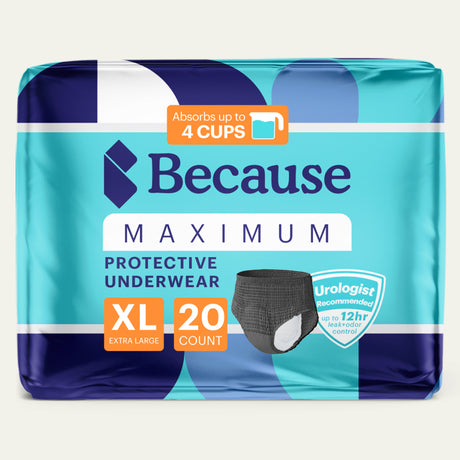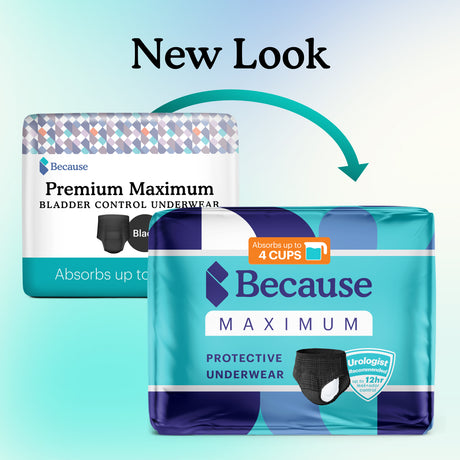Roughly half of all adult women experience urine leakage at least occasionally, and millions of men also struggle with urinary incontinence at some point in time. For some people, leaks seem to happen primarily during physical activity.
If that sounds familiar, concerns about urine leaking during exercise may lead you to avoid heading to the gym or a fitness class—but you don’t need to abandon your efforts to lead an active lifestyle due to bladder leakage. Through lifestyle changes, self-care, and treatment options, it’s possible to address the problem and live life on your terms.
What Causes Urine Leakage During Exercise?
Stress urinary incontinence, or SUI, is a type of incontinence that typically causes urine leakage during exercise. Stress incontinence typically happens due to a weak pelvic floor.
The term pelvic floor refers to the muscles that support the bladder, the rest of the urinary system, the reproductive organs, and the lower digestive system. In women, pelvic floor weakness often stems from vaginal delivery during childbirth and/or hormonal changes during menopause.
Men who experience stress incontinence typically have weakened sphincter muscles. There are two of these muscles located in the lower urinary tract: one that controls the flow of urine out of the bladder and one that relaxes to allow urine to exit the body. Weakness of the urinary sphincter pelvic muscles in men is usually a result of prostate surgery.
If you have stress incontinence, the weakness of the pelvic floor muscles can allow urine to leak out. This is most likely to occur with physical movement and things that increase intra-abdominal pressure. The excess pressure puts strain on the muscles of the pelvic floor, resulting in bladder leaks.
People with stress incontinence may experience leakage when they cough, sneeze, laugh, bend over, or lift heavy items. It may also happen during sex.
Some people who deal with urine leakage during exercise have mixed incontinence, meaning they suffer from stress incontinence and another common type of urinary incontinence called urge incontinence. This type of urinary incontinence occurs when muscles in the bladder contract irregularly, causing a sudden, urgent need to go to the bathroom. Overactive bladder is one form of urge incontinence that can cause frequent urination and unexpected urinary leakage during exercise.

How to Overcome Stress Incontinence When Exercising
Stress incontinence doesn’t have to interfere with your fitness routine or lower your quality of life, and there are ways that you can improve bladder control and reduce the frequency of urine leakage during exercise. Follow these tips to overcome exercise-induced leaks.
Strengthen Your Pelvic Floor
Just like you lift weights to build up the muscles in your arms, legs, back, shoulders, and abdomen, you can increase the strength of the pelvic floor muscles with the right exercises. In fact, performing pelvic floor exercises could have a significant effect on symptoms of urinary incontinence.
One of the most well-known and frequently recommended exercises for bladder control is the Kegel exercise. It involves consciously tightening the pelvic floor muscles before releasing them. Because all the movement is internal, you can perform Kegels during other activities, such as watching television or when you’re stuck in traffic on the way to work.
Although you can learn pelvic floor muscle exercises on your own, seeing a physical therapist to help you learn the proper form is a great first step. After a few sessions, you can perform the exercises independently as part of a daily routine.
Empty Your Bladder Before Your Workout
Before you begin your workout, head to the bathroom and urinate. Starting physical activity with an empty bladder can lower the likelihood of urine leakage.
Try a Vaginal Pessary or Urethral Insert
Women who experience urine leakage during exercise may benefit from wearable devices that help stop bladder leaks. There are two main categories of devices: vaginal pessaries and urethra inserts.
A vaginal pessary is a ring with bumps on two sides. When inserted into the vagina, it supports the base of the bladder and takes some of the strain off the pelvic floor muscles. Vaginal pessaries can be especially beneficial for women who have stress incontinence due to pelvic organ prolapse. This condition occurs when one or more of the pelvic organs slips out of place, increasing pressure on the pelvic floor.
Urethral inserts are small devices that look similar to tiny tampons, except they go in the urethra rather than the vagina. Once in place, they absorb urine leakage to prevent wetness. A urethral insert can generally be worn for eight hours per day. However, most people only use them during physical activity.
Retrain Your Bladder
Bladder training involves establishing a set schedule for using the bathroom. At each of your scheduled times, you try to urinate even if you feel like you don’t have to go at the moment. Over time, your body can adjust to the new routine, and you may be less likely to experience urinary urgency and other incontinence symptoms. Retraining your bladder can be especially effective when combined with exercises for building pelvic floor strength.
Wear Bladder Protection Products
It can take time for lifestyle changes and pelvic floor exercises to produce results. In the meantime, you can protect yourself from leaks with the right products. Options include pads for women and guards for men worn inside your underwear or incontinence undergarments that replace traditional underwear.
As you compare your bladder protection options, pay attention to absorbency levels. If you experience only light urine leakage during your workouts, moderate absorbency products may be right for you. Individuals with mixed incontinence or other types of incontinence that result in more severe leakage can benefit from maximum or overnight absorbency levels.
Avoid Bladder Irritating Foods
Certain foods and drinks can interfere with bladder control, and consuming them can cause the bladder to become irritated and inflamed, worsening incontinence symptoms. Some of the most common bladder-irritating foods and drinks include:
- Alcohol: Beer, wine, spirits, and mixed drinks commonly cause bladder irritation. Plus, alcohol is a diuretic, meaning it boosts urine production and makes you pee more often.
- Caffeine: Tea, coffee, energy drinks, and chocolate all contain caffeine, which can irritate the bladder and have a diuretic effect similar to alcohol.
- Acidic foods: Citrus fruits, tomato sauce, vinegar, and other foods with high acidity levels could trigger bladder irritation.
- Spicy foods: Curries, salsas, hot sauces, and other spicy foods cause bladder irritation in some people.
- Sweeteners: Sugar and artificial sweeteners found in diet sodas, sugar-free hot chocolate mix, and other products may contribute to bladder irritation.
When modifying your diet for bladder control, you may not need to cut out all the above foods and drinks as reactions to bladder irritants vary. You may be able to tolerate some things on the list but experience more frequent leakage or intense urgency when you have others. Keep a food diary to help you spot patterns and take an informed approach to changing your diet. For example, you may find that all you need to do is switch to herbal or green tea or opt for decaffeinated coffee to get relief from incontinence symptoms.
Focus on Fiber
Constipation can worsen stress incontinence. If your bowel becomes full of poop due to irregularity, the organ can stretch and put pressure on the bladder and pelvic floor muscles, making urine leakage more likely to occur.
A diet rich in fiber (fibre) may help promote regularity to ease constipation and reduce incontinence symptoms. Some foods that are good sources of fiber include:
- Vegetables
- Fresh and dried fruits
- Nuts and seeds
- Legumes like beans and lentils
- Whole grains
- Avocados
You can also talk to your medical provider about taking fiber supplements for constipation relief.
Maintain a Healthy Weight
Extra weight from body fat means more pressure on the bladder and a greater risk of urine leaking during exercise. A healthy diet and regular physical activity can help you lose weight or maintain a healthy weight for bladder control.
Go Low Impact for Now
High-impact exercise like running and lifting excessive weights makes you more likely to experience urine leakage during exercise. Consider switching to moderate and low-impact activities while you incorporate pelvic floor exercises or diet modifications into your daily routine. Some moderate and low-impact activities include:
- Walking
- Water aerobics
- Pilates
- Yoga
- Cycling
- Golf without using a golf cart
As your symptoms improve over weeks and months, you can return to high-impact exercises.
Hydrate Strategically
Sweating due to exercise can deplete your body of water and electrolytes, and dehydration can cause a number of unpleasant symptoms. Dehydration can also worsen urinary incontinence by causing urine to become more concentrated and increasing the risk of bladder irritation. At the same time, consuming too many fluids per day may make urine leakage more likely to occur.
To meet your body’s hydration needs and manage urinary incontinence, you’ll need to consume the right amount of fluids without going overboard. Your medical provider can give you advice about how much water to drink daily. Try to rehydrate toward the end of your workout and afterward rather than before to lower the likelihood of urine leaks.

When to Talk to Your Doctor About Urinary Incontinence During Exercise
It’s never too soon to talk to your healthcare provider about urinary incontinence during exercise. Healthcare professionals can conduct a physical exam and gather information about your symptoms, medical history, and overall health. Then, they can recommend treatments to reduce the risk of incontinence leakage.
Your doctor can also answer your questions about urinary incontinence and advise you on modifying your diet, exercise plan, and other aspects of your daily life to control symptoms.
Remember that bladder leaks during exercise are a common problem you don't need to feel embarrassed about. Talking to your medical provider could get you on the path toward overcoming incontinence more quickly, so don’t hesitate to bring up the topic.
Looking for products to protect you from urine leakage during exercise? Take our bladder protection quiz and get a sample pack to try.
Take The Quiz
If you're struggling with incontinence, join one of our private support groups today!
Women's Incontinence Support Group
Men's Incontinence Support Group
Sources:
Mayo Clinic Health System. (n.d.). Is urine incontinence normal for women? Retrieved from https://www.mayoclinichealthsystem.org/hometown-health/speaking-of-health/is-urine-incontinence-normal-for-women


